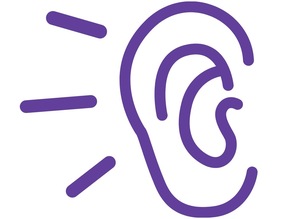Conversation Capture

Observing the lives of others is not only an essential element of how we define our own identities, it can also be a great spark for creativity. This activity was inspired by a blog post by Russell Davies.
This specific activity is perfect both for honing your listening and observation skills, but also how to turn this into an everyday documentary-style output. Oh and by the way, he does warn that this activity should be done with a certain level of sensitivity to the subjects you are observing.
Goal
Immerse yourself in the conversations of others in order to build empathy, spark creativity and reflect.
Instructions
Step 1:
- Go and sit in a coffee-shop or cafe for an hour.
- Try to find somewhere that’s not too crowded and where you should be able to listen in to a conversation that’s happening near to where you are sitting.
- If you are feeling adventurous try to go somewhere which is not your usual cup of tea (sorry for the pun).
- In his illuminating history of eavesdropping the anthropologist John Locke argues that “we humans have a strong and continuous desire to expose and experience private moments in the lives of Others”
Step 2:
- Listen to other people’s conversations.
- Listen to their speech patterns and their concerns.
- Try and get your observations down on paper. It might not be a good idea to make it too obvious.
- Don’t force it, don’t hop from table to table in search of better eavesdropping, just bask in the conversations that come your way.
- This activity should be done with a certain level of sensitivity to the subjects you are observing.
Step 3:
- If you are doing this with your team try to turn your notes into a simple presentation.
- You can also use what you listened to into an opportunity for training with the simple Human Centric Design tool, attached.
- When you listen to the conversations of others, what are your observations and interpretations of what people are saying?
- How could the needs that people reveal in their conversations be transformed into ideas and solutions?
Step 4: Reflection
Take time to reflect on what has emerged.
Reflection ideas (and come up with your own):
- What do you see?
- What do you sense?
- What's emerging?
- What do we need to stop doing?
- What do we need to start doing?
- By when?
- What else?
Attachments
- Conversation capture cover.jpeg
- Conversation Capture grid.png
Background
Credit: Blog post “How to be interesting” -Russell Davies.
Eavesdropping: An Intimate History, by John Locke
Source: Hyper Island toolbox
Hyper Island designs learning experiences that challenge companies and individuals to grow and stay competitive in an increasingly digitized world. With clients such as Google, Adidas and IKEA, Hyper Island has been listed by CNN as one of the most innovative schools in the world.
Author
Hyper Island designs transformative learning experiences to enable growth – for individuals and for businesses. Unlike typical education or service providers, we follow a tried-and-tested methodology and a wide network of real industry experts. Through our global network of schools and business services, we put people at the heart of innovation, leadership and change – for success today and tomorrow.